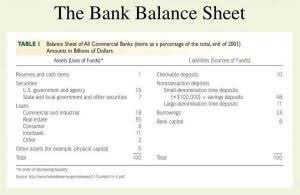
This detailed view can then be used to analyze the business’s liquidity, solvency, and overall financial health. Similarly, liabilities are categorized into current and non-current or long-term liabilities. Current liabilities include obligations expected to be settled within a year, such as accounts payable and accrued expenses. Long-term liabilities, like long-term debt or lease obligations, are due beyond a year.

Based on the reporting, there are two accounting standards as underlined by IFRS and GAAP US. Taking a look at the balance sheet of RMS Pvt Ltd you will notice that the assets have been categorized into three different groups as Total Fixed Assets, Total Current Assets, and Total Other Assets. Have you ever wondered how different it is to borrow money from your friends or family as against a bank?
Classified balance sheets are a useful resource for your business
For example, you report your inventory as a current asset because your business probably intends to sell those goods within the next 12 months. Other common examples of current assets include account receivables, or the value of what customers owe you. Note receivables take the form of promissory notes that you expect to turn into cash at some time in the future. Prepaid assets, such as consulting fees, rent due to you, and insurance payments that people make to your business, are also current assets. These classifications mainly include current and non-current sections for both assets and liabilities. Current assets, such as cash, accounts receivable, and inventory, are resources expected to be used or converted into cash within a year.
Fair disclosure is also one of the benefits offered by a classified balance sheet. In any balance sheet, it is possible to misrepresent in a classified balance sheet assets are usually classified as information or misstate the facts. Share capital is the capital raised by a business to fund the business activities.
Know Your Company’s Worth
The Current Assets list incorporates all assets that have an expiry date of less than one year. The Fixed Assets category records things like land or a structure, while assets that don’t fit into ordinary classifications are placed in the Other Assets classification. The equity segment of the classified balance sheet is exceptionally simple and like a non-classified report. The long-term section incorporates the commitments that are not due in the following year.
- It may also separate assets that are normally added together, such as FF&E, into how much is tied specifically to furniture, specifically to fixtures, and specifically to equipment.
- Both a classified and an unclassified balance sheet should stick to this equation, regardless of how basic or complex the balance sheet is.
- This in-depth information is pivotal in driving investment decisions, strategic planning, and performance evaluation.
- As a business owner, you’re probably familiar with different financial statements and what they indicate about your business.
- Along these lines, this part is constantly reflected in the current section.
These are like long-term debts where installments can need 5, 10, or possibly 20 years. Once the information has been entered into the correct categories, you’ll add each category or classification individually. When that is complete, you’ll need to add all the subtotals to arrive at your asset total, which is $236,600.
Easy To Perform Ratio Analysis
How this presentation is done, we will show you in the ensuing examples. The long-term section lists the obligations that are not due in the next 12 months. Keep in mind a portion of these long-term notes will be due in the next 12 months.
